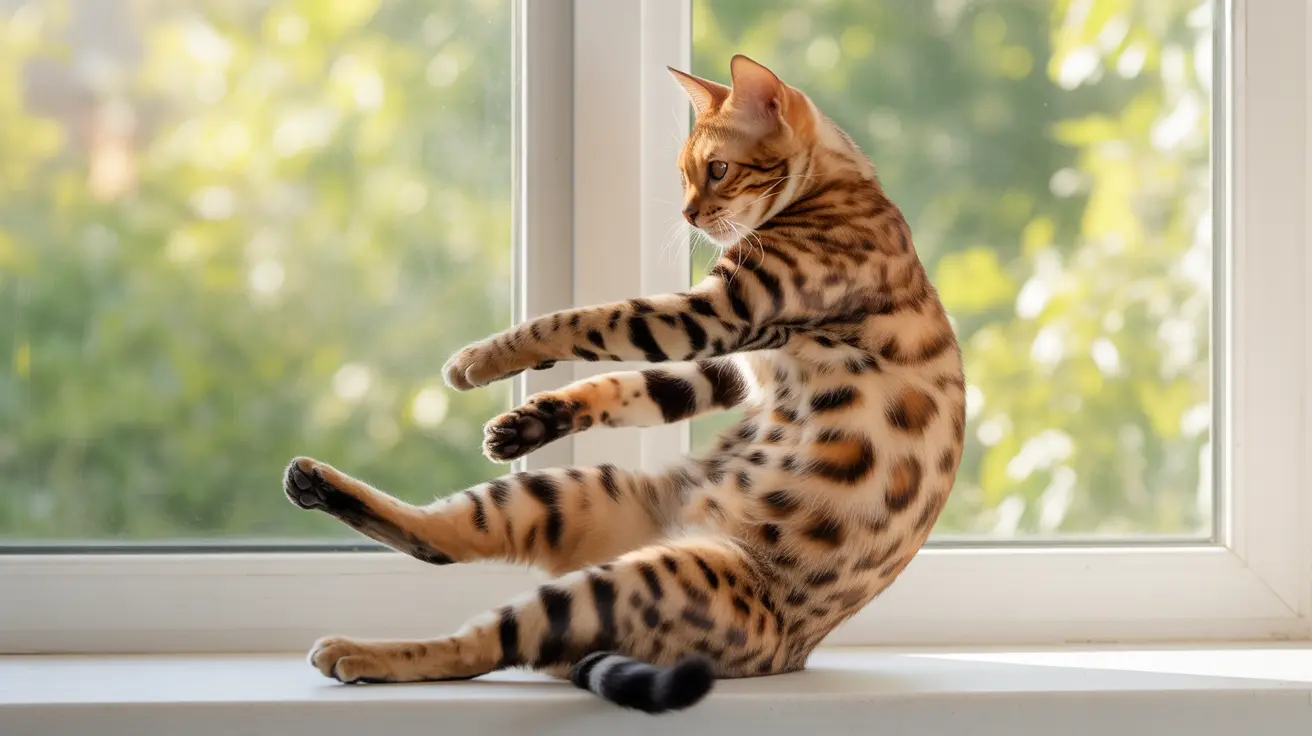If you've ever watched your cat squeeze through a tiny space or contort into seemingly impossible positions, you might wonder: can cats be double-jointed? While many people believe cats possess this trait, the reality is more fascinating than fiction.
The truth is, cats aren't actually double-jointed at all. Their remarkable flexibility comes from specialized anatomical features that have evolved over thousands of years. Let's explore the science behind your feline friend's extraordinary mobility and what makes them such agile creatures.
The Science Behind Cat Flexibility
Cats possess several unique anatomical features that contribute to their incredible range of motion. Unlike humans, who have 33 vertebrae, cats have approximately 53 vertebrae in their spinal column. These vertebrae are connected by elastic tissues and flexible discs, allowing for exceptional movement and contortion.
Their shoulder structure is particularly noteworthy, with shoulder blades attached to the body primarily by muscles rather than bone. This design allows cats to rotate their front limbs through an impressive range of motion and squeeze through openings barely wider than their heads.
Specialized Anatomical Features
Unique Skeletal Structure
Cats have several distinctive skeletal adaptations that enhance their flexibility:
- Free-floating collarbone embedded in muscle
- More vertebrae than most mammals
- Highly mobile shoulder blades
- Specialized ball-and-socket joints
Muscular System
The feline muscular system works in perfect harmony with their skeleton, featuring:
- Strong, elastic muscles that support flexible movement
- Powerful core muscles for balance and agility
- Specialized neck muscles for precise head control
- Flexible spine muscles enabling the characteristic "cat stretch"
Common Misconceptions About Cat Joints
The term "double-jointed" is a misnomer when applied to cats. What we're actually seeing is a combination of evolutionary adaptations that allow cats to move in ways that seem impossible to humans. These adaptations serve important survival purposes, enabling cats to hunt, escape predators, and navigate their environment effectively.
Joint Health and Care
While cats' natural flexibility is healthy, they can still experience joint issues. Maintaining proper joint health involves:
- Regular exercise and play
- Maintaining a healthy weight
- Proper nutrition rich in joint-supporting nutrients
- Regular veterinary check-ups
- Age-appropriate activity levels
Frequently Asked Questions
Can cats really be double-jointed, or is their flexibility due to something else?
No, cats are not double-jointed. Their extraordinary flexibility comes from specialized anatomical features, including more vertebrae than humans, flexible connective tissues, and uniquely structured shoulder joints.
What anatomical features make cats more flexible than other animals?
Cats have approximately 53 vertebrae (compared to humans' 33), free-floating collarbones, muscle-attached shoulder blades, and specialized ball-and-socket joints that all contribute to their superior flexibility.
Are joint hypermobility or double-jointed conditions common or healthy in cats?
True joint hypermobility conditions are actually rare in cats and are usually pathological when they occur. The flexibility we observe in cats is normal for their species and not a medical condition.
How can I tell if my cat has a joint problem like hypermobility or injury?
Watch for signs such as limping, reluctance to jump, changes in gait, or decreased activity levels. If you notice any of these symptoms, consult your veterinarian for proper evaluation.
What can I do to support and maintain my cat's joint health and flexibility?
Maintain your cat's joint health through proper nutrition, regular exercise, weight management, and routine veterinary care. Provide opportunities for climbing, stretching, and natural movement in your home environment.
Understanding that cats aren't double-jointed but rather possess specialized anatomical features helps us better appreciate their remarkable abilities. By providing proper care and attention to their joint health, we can help our feline friends maintain their natural flexibility throughout their lives.






